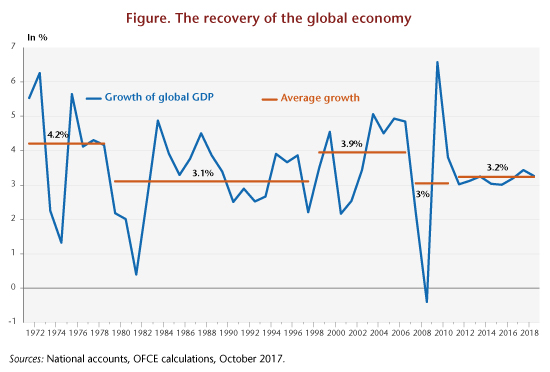The impact on redistribution of the ECB’s monetary policy
By Jérôme Creel and Mehdi El Herradi
A few weeks before Christine Lagarde assumes the
presidency of the European Central Bank (ECB), it may be useful to examine the
balance sheet of her predecessors, not only on macroeconomic and financial
matters but also with respect to inequality. In recent years, the problem of
the redistributive effects of monetary policy has become an important issue,
both academically and at the level of economic policy discussions.
Interest in this subject has grown in a context
marked by the conjunction of two factors. First there has been a persistent
level of inequality in wealth and income, which has been hard to reduce. Then there are the activities
of the central banks in the advanced economies following the 2008 crisis to
support growth, particularly through the implementation of so-called “unconventional”
measures [1]. These measures, mainly manifested in quantitative
easing (QE) programmes, are suspected to have increased the prices of financial
assets and, as a result, favoured wealthier households. At the same time, the
low interest rate policy could have resulted in a reduction in interest income
on assets with fixed yields, most of which are held by low-income households. On
the other hand, the real effects of monetary policy, particularly on changes in
the unemployment rate, could help keep low-income households in employment. The
ensuing debate, which initially broke out in the United States, also erupted at
the level of the euro
zone after the ECB launched
its QE programme.
In a recent
study focusing on 10 euro zone
countries between 2000 and 2015, we analysed the impact of the ECB’s monetary
policy measures – both conventional and unconventional – on income inequality. To
do this, we drew on three key indicators: the Gini coefficient, both before and
after redistribution, and an interdecile ratio (the ratio between the richest
20% and the poorest 20%).
Three main results emerge from our study. On the
one hand, a restrictive monetary policy has a modest impact on income
inequality, regardless of the indicator of inequality used. On the other hand,
this effect is mainly due to the southern European countries, especially in the
period of conventional monetary policy. Finally, we found that the
redistributive effects of conventional and unconventional monetary policies do
not differ significantly.
These results thus suggest that the monetary
policies pursued by the ECB since the crisis have probably had an insignificant
and possibly even favourable impact on income inequality. The forthcoming
normalization of the euro zone’s monetary policy could, on the contrary,
increase inequality. Although this increase may be limited, it is important
that decision-makers anticipate it.
[1] For an analysis of the expected impact of the
ECB’s unconventional policies, see Blot et al. (2015).
